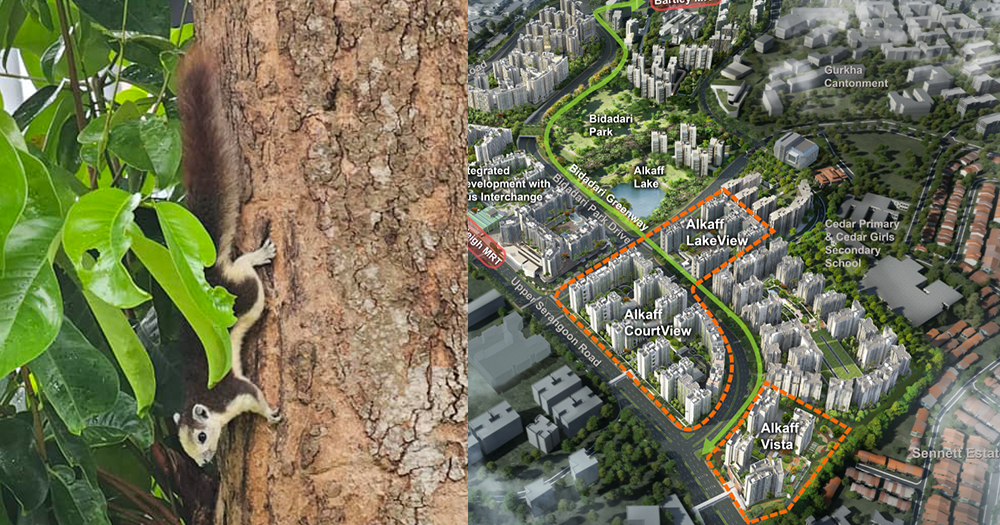One scorching hot Wednesday afternoon, my colleague sent me a link to a Facebook post. "Do you know about these squirrels?" she asked.
Being kind of a sucker for wildlife — especially those of the cute and fluffy variety — I've come across a fair number of squirrels.
But what I saw in the post was a critter entirely unlike the more common Plantain squirrel you see around HDB blocks and the like.
Instead of a uniform brown-on-brown fur coat, this little guy had a light cream head and underparts.
Kind of resembling the cartoon chipmunks Chip 'n' Dale, as one commenter observed.
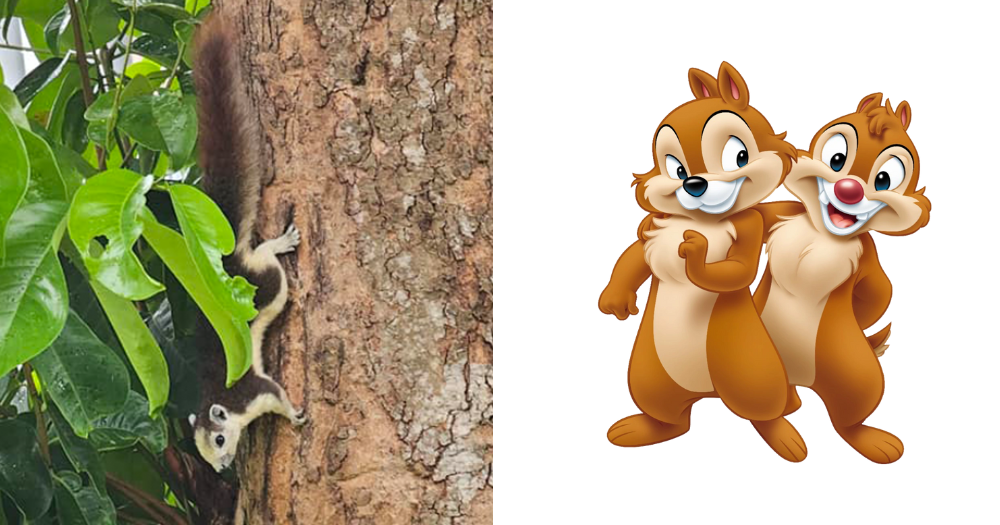 Finlayson's squirrel vs. Chip 'n' Dale. Photo from Irvin Teo and image of Chip 'n' Dale via Disney Fandom.
Finlayson's squirrel vs. Chip 'n' Dale. Photo from Irvin Teo and image of Chip 'n' Dale via Disney Fandom.
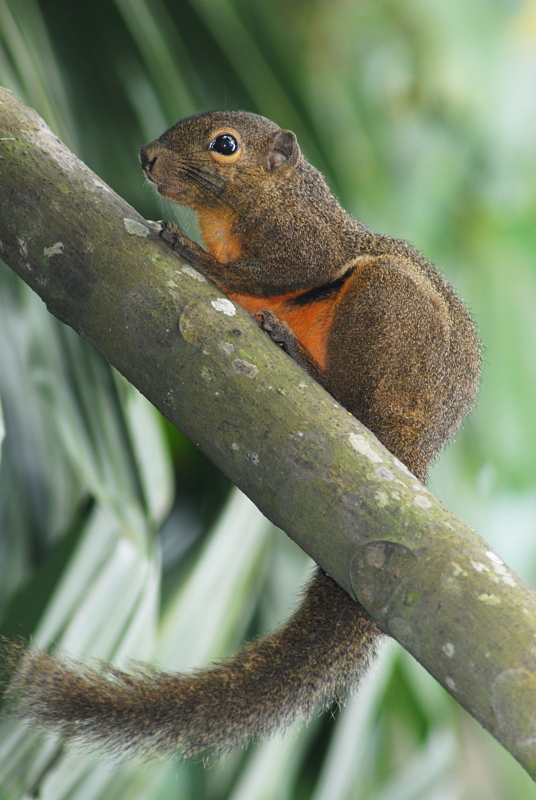 The more common and native Plantain squirrel. Photo courtesy of NParks
The more common and native Plantain squirrel. Photo courtesy of NParks
Background
The unusual creature is called the Finlayson's squirrel, a non-native species believed to have been introduced into the local ecosystem in the early 1990s.
 Photo by GS Goh.
Photo by GS Goh.
According to the National Parks Board (NParks), the squirrel was first brought into Singapore as part of the previously-legal exotic pet trade.
It's not actually rare by any means. The squirrel is native to Thailand, where it's the common urban squirrel in Bangkok.
But its unusual creamy colouring, large eyes, and exceptionally bushy tail made it an attractive pet.
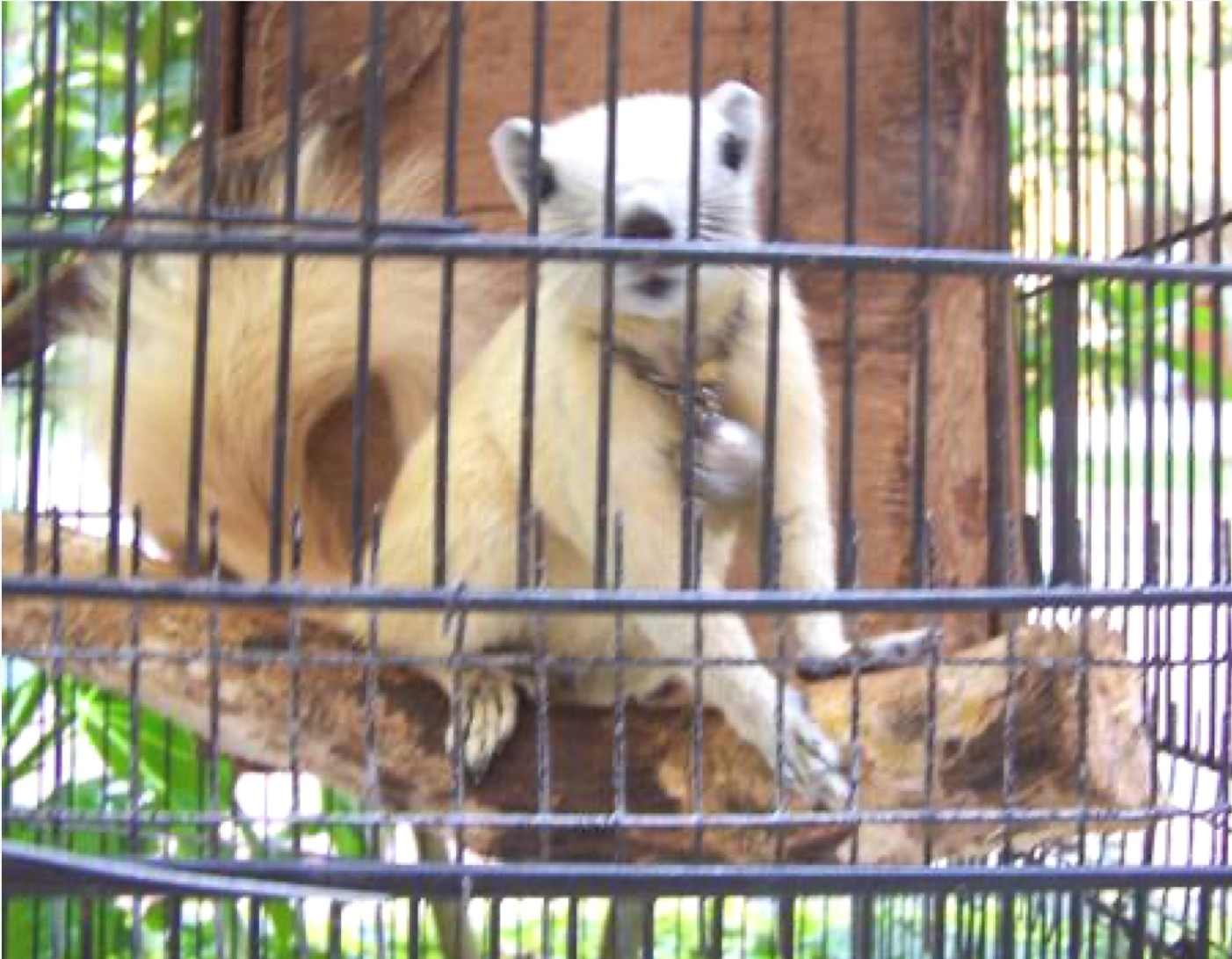 The squirrels were typically kept in aviary-like cages. Photo from ACRES
The squirrels were typically kept in aviary-like cages. Photo from ACRES
Speaking to Mothership, ACRES co-CEO Anbarasi Boopal (or Anbu, as she prefers to be called) shared that the squirrels were likely sold as pets prior to the enactment of the Endangered Species Act in 1986.
The Act regulated the import, export, and sale of animals in Singapore, and in particular was aimed at tackling the then-rampant wildlife trade.
Most likely, the squirrels were introduced into the local environment due to a mix of escape and abandonment cases, Anbu explained.
They have since established a small population in Bidadari.
A TodayOnline article from 2014 similarly suggested that being a "fairly aggressive" squirrel, the Finlayson's squirrel might be pushed outward from its Bidadari habitat due to development in the area, posing a threat to native species.
It also posited that the squirrel might need to be culled or removed.
Back then, NParks said that it "is in the process of working with non-governmental organisations and Singapore naturalists to monitor the population and study the appropriate measures to take, if necessary".
Alive and well?
Back to the Facebook post. A member of the Singapore Wildlife Sightings group, Irvin Teo, recently came across a Finlayson's squirrel in Woodleigh.
That suggested that the squirrel might have ended up remaining in Singapore after all.
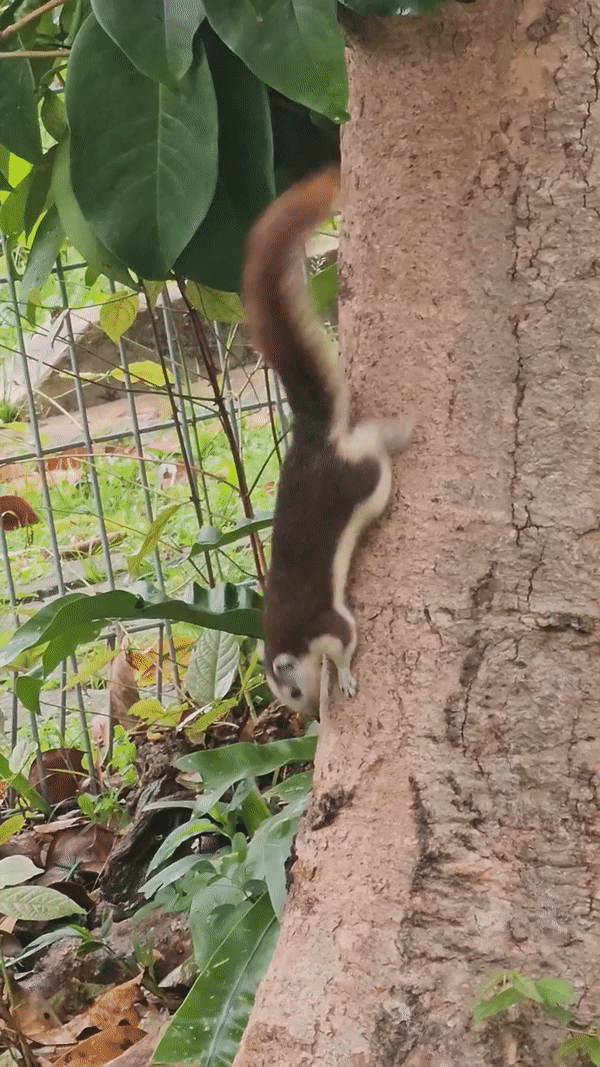 Video from Irvin Teo
Video from Irvin Teo
Several other users also commented that they had previously seen the squirrel in Bidadari, particularly around the Gurkha Cantonment, before the area had been developed for housing.
But most professed to not have seen them around recently.
In hopes of learning if the squirrels were indeed still present locally, I spoke to NParks to check if population control measures had been taken.
Fortunately, NParks confirmed that no measures have been taken recently, as the initial concerns have so far not been raised.
According to Ryan Lee, Group Director of the National Biodiversity Centre at NParks:
"In Singapore, the Finlayson’s squirrel has few natural predators, so there is potential for their population to increase uncontrollably.
However, as the distribution of the Finlayson’s Squirrel is currently limited to Bidadari, Woodleigh and Upper Aljunied, and we have also not recorded sightings of them in our nature reserves, there is no immediate concern for this species."
Lee added that the Finlayson's squirrel has been found to reach high population densities in other countries such as Japan, Italy, and Argentina.
A quick Google search reveals that they are indeed survivors: highly tolerant of degraded and fragmented habitats, and prolific breeders to bat.
As such, it seems even four-odd years post-development, the tenacious squirrel species remains firmly in place.
Finding the squirrel
To verify for ourselves if the squirrels were indeed alive and well, I made the trip down to Bidadari with a colleague.
Full of confident optimism, we went down at 6:30am, as we'd earlier read that squirrels are most active at dawn and dusk.
But two hours of fruitless searching pursued. And, to add insult to injury, it began to rain.

Thankfully, the rain soon eased, and we resumed our search, albeit this time with less hope.
Post-rain, we found a few more signs of life, including a millipede and a few cute and unusual birds (like a bright blue kingfisher) — but no squirrels. Not even the common Plantain type.
It was only at the very end of our search, when dark clouds started looming again and we were about to give up, that we discovered a promising-looking tree. Shaded and verdant, it looked like the perfect place for a squirrel to inhabit.
"Like a mansion for squirrels," my colleague commented.
With nothing to lose, we crossed the road. It took a few minutes of intense staring, but finally, we saw some rustling high up in the leaves — and then another. And another.
It was not just one, but a whole family of squirrels.

The colony appeared to be busily foraging for berries growing in the trees.
Despite their distinctive brown-and-cream colouring and quick, furtive movements, it was hard to spot them as they remained hidden far up in the tree's canopy foliage.
But they were still noticeable (to the determined eye), in all their fluffy cuteness.
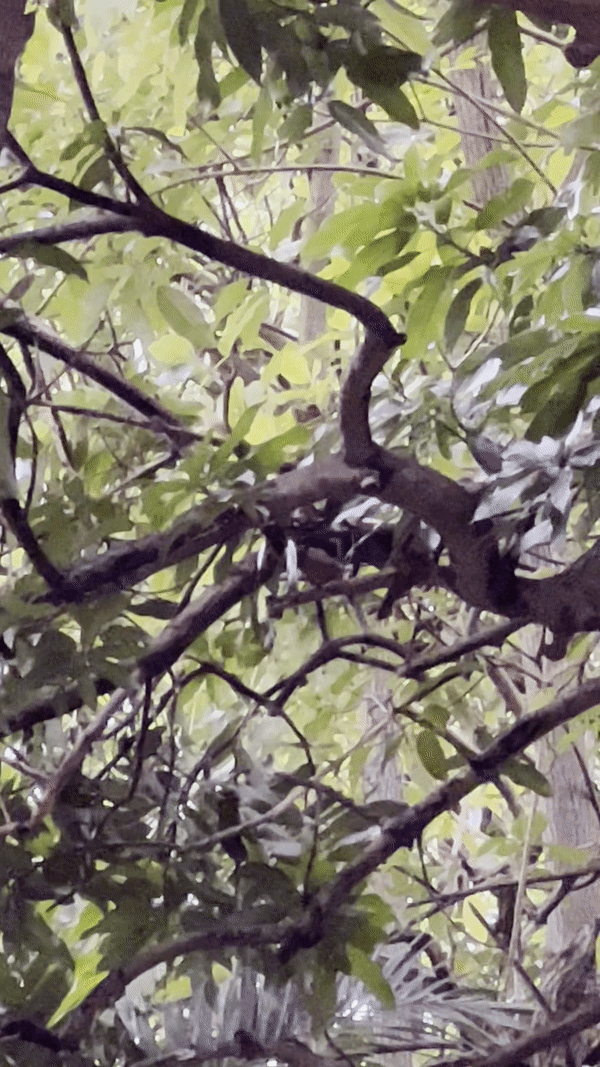
We also tried visiting Bidadari Park, where an ex-zookeeper friend had informed me I might have the best chances of spotting one.
Unfortunately, it was still under construction and closed off.
A happy accident
The story of the Finlayson's squirrel has a happy ending, and I'm glad I was able to see it alive and well in Bidadari.
But introduced species are not always welcome.
Like with the Red-breasted parakeet, introduced animals that are highly adaptable and thrive in our environment may end up being removed or culled when they become a nuisance.
Or like the case of the Red-eared slider. Another introduced species that has since become ubiquitous in Singapore's waters, it may pose a threat to our native species, as it is a voracious breeder and competes aggressively with the indigenous Malayan box turtle for food and space.
Furthermore, Singapore, being a small nation, has a fragile ecosystem which can easily be disrupted.
As such, when such animals are allowed to live, it can also be damaging — albeit to other species rather than their own.
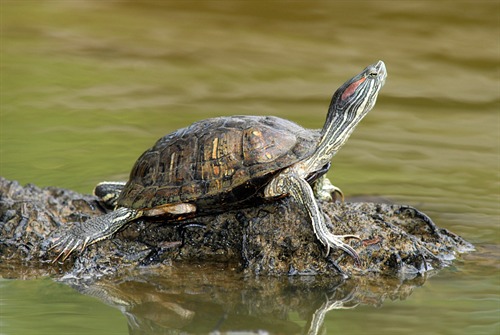 Photo from NParks
Photo from NParks
All this through no real fault of their own. After all, it is us that release or abandon these animals into the wild.
"But at the end of the day, they are the ones who pay the price," Anbu explained.
Lee also stressed that everyone has a part to play in ensuring the survival of Singapore's native biodiversity.
"The establishment of non-native species can adversely affect our local biodiversity and upset the ecological balance," he explained.
"Should populations of non-native animals continue to grow, our native biodiversity will face greater competition for food and other natural resources.
We would like to remind the public to abstain from practices such as the mercy release of animals or releasing unwanted pets into the wild."
Top photos from Irvin Teo and HDB
If you like what you read, follow us on Facebook, Instagram, Twitter and Telegram to get the latest updates.

